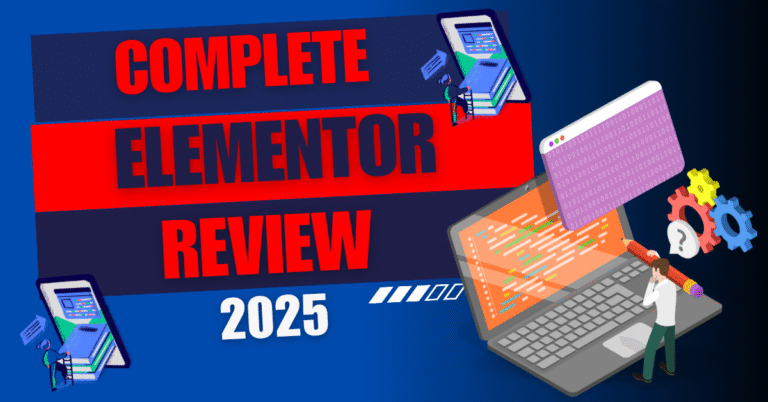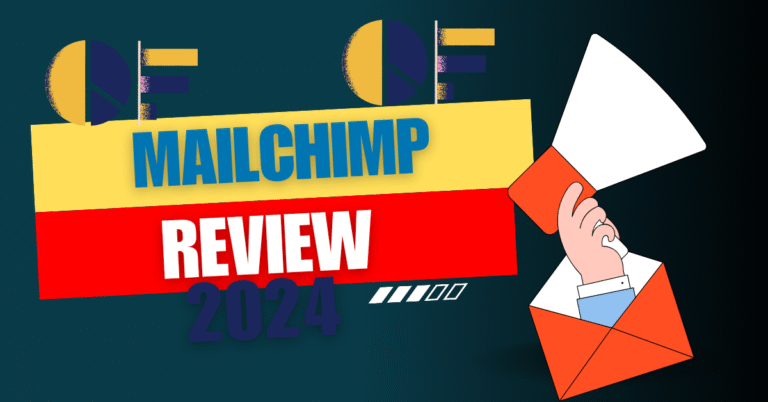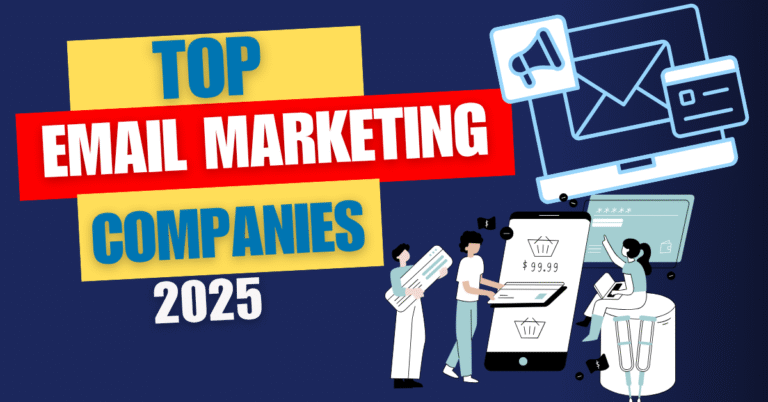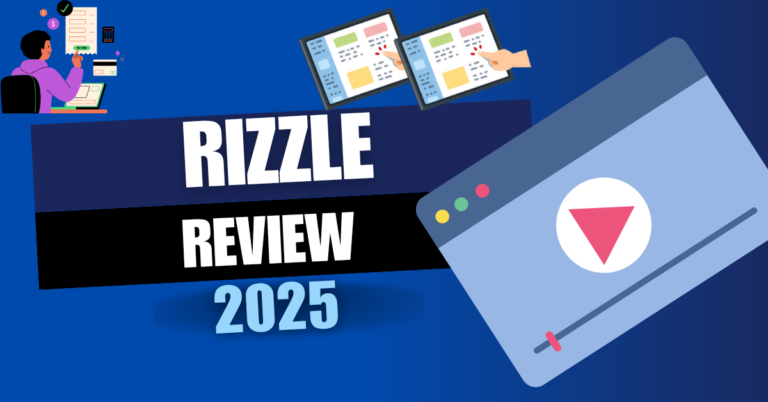When you purchase through our links, we earn commissions at no extra cost to you.
When I first started using Mailchimp, I was impressed by how user-friendly and powerful it is for managing email marketing campaigns. More than just a tool for sending emails, Mailchimp offers automation, analytics, audience segmentation, and design tools, all within an intuitive interface. Its robust features, like customizable templates, A/B testing, and Mailchimp integration with tools like Shopify, WordPress, and social media platforms, streamline workflows and enhance campaign performance. By connecting seamlessly with other platforms, Mailchimp saves time, minimizes manual effort, and helps create efficient, data-driven email campaigns, making it an invaluable asset for any marketer.
What stands out about MailChimp is its reputation as a reliable and efficient email marketing platform. With a strong rating of 4.3 out of 5 stars on G2, supported by over 12,500 reviews, MailChimp is praised for its ease of use, powerful features, and ability to deliver results. Users highlight its intuitive interface, robust automation options, and seamless integrations with other tools as key reasons for its popularity. This high rating reflects MailChimp’s ability to help businesses create engaging email campaigns, track performance with detailed analytics, and grow their customer base effectively.
Top Features of Mailchimp
Email Campaign Builder
MailChimp makes it easy to create beautiful emails without needing to know any coding. Its drag-and-drop email builder lets you add text, images, buttons, and more with just a few clicks. Whether you’re designing a newsletter or a special promotion, MailChimp offers customizable templates that help your emails look professional and attractive.
Marketing Automation
One of the standout features of MailChimp is its ability to automate email campaigns. This means you can set up emails to be sent automatically based on specific actions your subscribers take, such as signing up for your newsletter or abandoning a shopping cart. With automated workflows, you don’t have to manually send emails every time, saving you time and ensuring your audience gets the right message at the right moment.
Audience Segmentation
MailChimp allows you to divide your email list into smaller groups or segments based on different factors like age, location, or past interactions with your emails. This helps you send more relevant and personalized messages to each group. For example, you can send special offers to customers who have made purchases in the past, or new product updates to people who signed up for your newsletter.
Analytics and Reporting
With MailChimp, you get detailed reports on how well your emails are performing. It tracks important metrics like how many people opened your email, how many clicked on links, and how many unsubscribed. This data helps you understand what works and what doesn’t, so you can improve your future campaigns. By seeing these results, you can adjust your strategies and make sure you’re getting the best possible results from your email marketing.
Integrations with Third-Party Tools
With MailChimp, you get detailed reports on how well your emails are performing. It tracks important metrics like how many people opened your email, how many clicked on links, and how many unsubscribed. This data helps you understand what works and what doesn’t, so you can improve your future campaigns. By seeing these results, you can adjust your strategies and make sure you’re getting the best possible results from your email marketing.
Popular Mailchimp Integrations
Mailchimp and Shopify Integration
The Mailchimp and Shopify integration is a powerful combination for e-commerce businesses. By syncing your Shopify store with Mailchimp, you can easily manage email campaigns targeting your customers. This integration allows you to send personalized product recommendations, abandoned cart reminders, and promotional emails based on your customer’s shopping behavior, all while keeping your campaigns aligned with your store’s performance.
Mailchimp and Salesforce Integration
The Mailchimp and Salesforce integration helps businesses create more personalized marketing campaigns by syncing your Salesforce CRM data with Mailchimp. With this integration, you can segment your audience more effectively, target specific customer groups, and send tailored email campaigns based on customer data and behavior stored in Salesforce, ultimately improving your email marketing effectiveness.
Mailchimp and HubSpot Integration
The Mailchimp and HubSpot integration allows you to combine email marketing with inbound marketing strategies seamlessly. By syncing your Mailchimp email lists with HubSpot’s CRM, you can create more personalized and targeted campaigns, nurture leads, and automate follow-ups. This integration ensures that all customer data flows smoothly between the two platforms, enabling more efficient and effective marketing efforts.
Mailchimp and WooCommerce Integration
The Mailchimp and WooCommerce integration offers a powerful solution for WooCommerce store owners. By connecting Mailchimp with your WooCommerce store, you can send personalized follow-up emails, product recommendations, and promotional offers to customers based on their purchase behavior. It also enables automated campaigns like abandoned cart reminders, helping you increase sales and keep your customers engaged.
Mailchimp and Facebook Integration
The Mailchimp and Facebook integration is a powerful tool for marketers. By syncing your Mailchimp campaigns with Facebook, you can easily create and manage ads targeting your Mailchimp audience. This integration allows you to use email lists to target specific segments and reach potential customers on Facebook, making it easier to grow your audience and enhance your marketing efforts. You can also track the performance of your ads directly in Mailchimp, streamlining your campaign management.
Pros and Cons
Pros
User-Friendly Interface
One of the things I love about Mailchimp is its intuitive and easy-to-navigate interface. Whether you’re a beginner or an experienced marketer, the platform makes it simple to create email campaigns without a steep learning curve. The drag-and-drop email builder, in particular, makes designing emails a breeze, allowing me to focus more on content rather than getting caught up in technical details.
Automation Features
Mailchimp’s automation tools are a real game-changer. I can set up workflows to automatically send emails based on specific actions, like welcoming new subscribers, sending birthday emails, or reminding customers about abandoned carts. These automated workflows help me stay in touch with my audience without constantly needing to send each email manually, saving me a lot of time and effort.
Personalization and Segmentation
The ability to segment my audience is one of the standout features of Mailchimp. I can group my subscribers based on different criteria, such as purchase behavior or engagement levels, and send them targeted emails. This level of personalization helps me deliver the right content to the right people, improving engagement and results.
Comprehensive Analytics
Mailchimp provides detailed reports that give me insights into how my email campaigns are performing. I can track open rates, click rates, bounces, and other key metrics, which helps me understand what’s working and what needs improvement. The analytics dashboard is easy to understand, so I can quickly make data-driven decisions to optimize my future campaigns.
Integration with Other Tools
Another thing I like about Mailchimp is how well it integrates with other platforms. Whether it’s connecting with e-commerce platforms like Shopify and WooCommerce or linking to social media tools like Facebook and Instagram, Mailchimp makes it easy to manage my email campaigns alongside other marketing efforts. These integrations save me time and help create a cohesive marketing strategy.
Cons
Limited Customization on Lower Plans
While Mailchimp offers great features, some of the more advanced customization options are locked behind higher-tier plans. For instance, if you’re on the free or basic plan, you have limited access to design features and automation workflows. This can be frustrating if you want more control over your campaigns but aren’t ready to upgrade.
Learning Curve for Advanced Features
While Mailchimp is generally user-friendly, some of its more advanced features—such as segmentation, automation workflows, and A/B testing—can be a bit difficult to fully understand and use. The platform does offer tutorials and support, but it may still take some time to get the hang of these more complex tools, especially for beginners.
Limited Reporting for Certain Campaign Types
While Mailchimp provides comprehensive analytics for most campaigns, certain types of reports, such as detailed insights into social media performance or SMS marketing results, are more limited or require you to upgrade to a higher-tier plan. If you’re looking for very specific data or cross-platform analytics, you might find Mailchimp’s reporting options lacking in some areas.
Pricing
Mailchimp offers flexible pricing plans to cater to businesses of all sizes. The Standard plan allows you to send up to 6,000 emails each month to 500 contacts, starting at $6.78/month for the first 12 months. After the first year, the price increases to $13.56/month. This plan includes key features such as email templates, marketing automation, and audience insights, making it an ideal choice for small businesses and growing brands.
For businesses that require more advanced capabilities, Mailchimp offers additional plans, including the Essentials Plan, which starts at $13/month, and the Premium Plan, which starts at $350/month. These higher-tier plans offer features like A/B testing, advanced segmentation, detailed reporting, and priority support, catering to more complex marketing needs. Mailchimp’s pricing structure is flexible, allowing businesses to scale their plans based on their email list size and marketing requirements.










